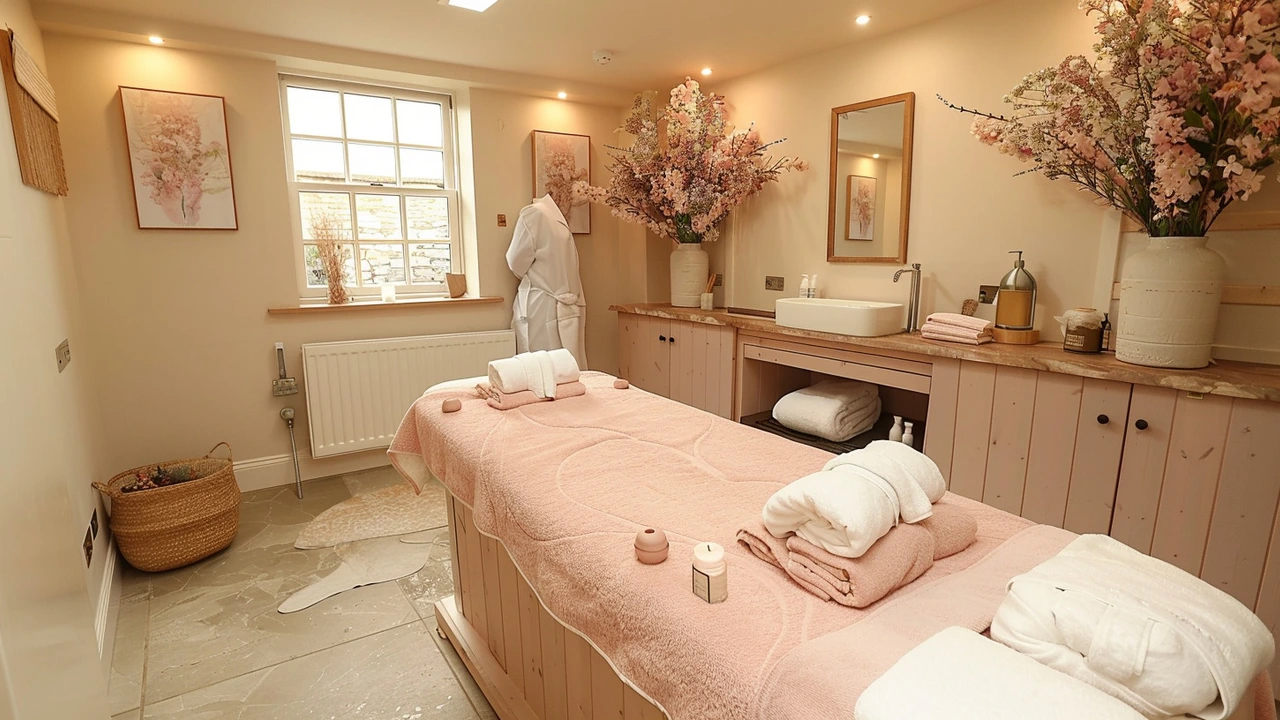Polarity Therapy: Your Guide to Balance, Healing, and Inner Peace

You know those days when your mind feels like a tangled earbud cord, your emotions are on a rollercoaster, and your body can’t decide if it wants to smile or hibernate? Now picture a therapy that ties them all together and straightens out the mess. Polarity Therapy isn’t just another menu item on the wellness buffet—it’s a genuine path to rebalancing your body, rediscovering joy, and regaining an inner calm that sticks even when the noise outside gets loud. While modern medicine works wonders for broken bones and serious diseases, it’s not always so great for restoring that deep sense of harmony everybody secretly craves. Polarity Therapy has roots stretching from ancient yogic philosophy to modern-day bioenergetics—and its promise is straightforward: get your energy flowing right, and you’ll start to feel deeply, unstoppably alive.
What Is Polarity Therapy? Unpacking the Energy Model
Polarity Therapy, invented by Dr. Randolph Stone in the late 1940s, springs from a bold idea: our health depends on the smooth, balanced flow of energy within and throughout the body. Dr. Stone, a chiropractor and osteopath, spent years digging through Ayurveda, Traditional Chinese Medicine, and Western science. He pulled concepts from everywhere—the prana of yoga, the chi of acupuncture, and Western anatomy—then wove it all together into a practical framework. He made it simple: energy feeds our cells, thoughts, and feelings. When it gets blocked or stuck (by stress, pain, or trauma), things start falling apart—physically, emotionally, even spiritually.
The "polarity" part? Our bodies have positive, negative, and neutral poles, kind of like a battery, and energy flows along specific pathways connecting these poles. Imagine your body as a map of rivers and currents—when a log (emotional stress, physical tension, toxic thought) gets wedged in there, the flow stops or gets choppy. Polarity Therapy searches for these blockages and clears the way so that energy can flood back into tired tissues and frayed nerves.
What sets it apart from other energy-based practices is its full-spectrum approach: Polarity Therapy isn't just about touch. It blends bodywork, simple stretching and movement routines (called Polarity Yoga), mindful eating, and even the way you speak or think about yourself. A typical session combines gentle hands-on balancing holds, rocking movements, and deep pressure on energy points. Sessions look nothing like a regular massage—the therapist might just cradle your head or support your sacrum, watching for the subtlest shifts in muscle, breathing, and mood. It sounds gentle, but people often walk away saying things like "I finally feel like myself again."
Modern research is beginning to play catch-up. While large-scale studies remain limited, a pilot trial published in the journal "Integrative Cancer Therapies" found that Polarity Therapy significantly reduced fatigue in breast cancer patients undergoing radiation. In practice, therapists see regular improvements for folks with migraines, chronic stress, insomnia, muscle pain, digestive issues, and emotional burnout.
What you need to know is that Polarity Therapy works uniquely for everyone. Some feel heat, tingling, or a whoosh of emotion during a session. Others notice changes after—the best night's sleep in weeks, a stubborn pain finally relenting, or a sudden burst of clarity and lightness. Children and the elderly can benefit as much as athletes or stressed-out professionals. You don’t need to “believe” in it for the effects to be real—your nervous system responds, whether you call it energy, chi, or simple, focused warmth from another human's hands.
Here’s a quick peek at the core principles Dr. Stone outlined, making up the "Science of Life":
- Energy is the foundation of health. Where it flows, there is life; where it’s stuck, problems begin.
- The body, thoughts, and emotions are all interwoven. Shifting one creates a ripple effect through the rest.
- Balance (polarity) matters more than perfection. Too much or too little is equally disruptive.
- Healing isn’t about fixing; it’s about rebalancing and releasing what’s stuck—physically and emotionally.
| Polarity Therapy Key Facts | Details |
|---|---|
| Year Developed | 1947 |
| Founder | Dr. Randolph Stone |
| Main Modalities | Bodywork, Nutrition, Polarity Yoga, Counseling |
| Pilot Study Benefit | Reduced fatigue in cancer patients |
| Session Length | 45–90 minutes |

How a Session Works and Why It Feels So Different
The first time you walk into a Polarity Therapy session, forget any spa stereotypes. There are no scented oils, fancy robes, or whale sounds on repeat. What you will find: a genuine curiosity about what’s going on for you—not just your symptoms, but what makes you tick or falter. The therapist will usually ask a bit about your health background, work pressure, relationships, and the kind of stress you’re carrying. Sometimes the "diagnosis" is as simple as: you’re spinning out of control and your nervous system is screaming for a reset.
Polarity practitioners listen with their hands and hearts. You’ll lie on a comfortable table, fully clothed. Some sessions start with a few breathing or rocking movements to ground you. The therapist then uses gentle holds, light touch, or firm pressure along mapped out zones—the head, shoulders, hips, spine, hands, and feet. The whole point is to realign the body’s positive and negative poles, and to encourage a smooth, even energy circuit. A quick tip: If you’re nervous about subtle therapies, ask your therapist to explain what they’re doing and why. Many folks appreciate that Polarity never feels invasive or forceful: you’re in charge, and you can always ask questions or pause.
What’s happening behind the scenes is part art, part science. Practitioners are spotting lines of energy (think: rivers and eddies), and using hands as gentle paddles to stir up or calm down the flow. They’re trained to notice how your breath, muscles, temperature, and even your micro-movements change from minute to minute. Sometimes, they’ll guide you to move or stretch, or to bring awareness to a specific spot. If you’ve had massage or reiki before, you may notice Polarity’s touch can feel almost electric, deeply comforting, or just weirdly right.
Many people report some kind of sensory experience—heat, cool waves, tingling, deep sighs of relief, or unexpected emotions bubbling up. Here’s the kicker: Polarity Therapy works “through” your body’s wisdom; it doesn’t force, it listens and mirrors what you actually need. Tears, laughter, sleepiness, or a big surge of calm are all possible and completely normal. One client I worked with described it as "my nervous system just exhaled; I don't even remember the last time I felt that relaxed."
If you’re wondering how long it takes for results, here’s the real talk: sometimes you’ll notice shifts right away—your shoulders drop, your jaw unclenches, and your thoughts slow down. Chronic issues or deep-rooted stress might need several sessions, spaced a week or two apart. Research and experience both suggest cumulative benefits. Most people stick with it because it leaves them feeling lighter, clearer, and more resilient, not just patched up for a moment but fundamentally changed from the inside.
Besides hands-on work, sessions might include brief coaching: talking about life patterns or beliefs, reviewing what to eat (or avoid), and showing you stretches or breathwork to continue at home. Imagine learning to "tune up" your own energy in everyday moments, whether you’re stuck in traffic or cramming for a big presentation. This is where Polarity Therapy shines—it gives you practical tools to keep energy moving, not just in the session but long after. Here are a few at-home ideas practitioners might suggest:
- Take three minutes each morning to stretch and breathe, focusing on lengthening your spine and loosening your shoulders.
- If anxiety hits, rest your left hand on your heart and your right hand on your belly—breathe slowly and feel the warmth sink in.
- Cut down on processed foods, sugar spikes, and caffeine—favor grounding foods like root veggies, whole grains, and healthy fats.
- Keep a "mood log"—jotting notes about times when you feel tense, stuck, or off-balance and what you were doing/thinking at that moment.
Therapists often share that the biggest changes come not from a single session, but from building awareness into your everyday routines. The goal isn’t just to relax on the table, but to learn to ride the ups and downs of life without losing your sense of self.

Tips, Myths, and How to Try Polarity Therapy for Yourself
Stepping into alternative therapies for the first time can feel intimidating, especially if you’re used to quick-fix medication or if the word "energy" brings out your inner skeptic. There’s plenty of confusion out there, so let’s bust a few common myths and share some easy ways to get started with polarity therapy.
Myth 1: Polarity Therapy is just fancy massage. In reality, it’s less about muscles and more about reconnecting your mind, body, and energy. The pressure is much lighter and the intention is deeper—a Polarity session can leave you feeling like you’ve had a mental, emotional, and physical reset all at once.
Myth 2: You have to "believe" in energy for it to work. The nervous system and the body’s tissues respond to touch, breath, and intention—there’s plenty of evidence that relaxation, calming hands, and mindful attention can shift pain levels, reduce stress hormones, and support your immune system, no matter your beliefs.
Myth 3: It’s not for “serious” issues. While it’s not a replacement for emergency care or medication, Polarity Therapy supports major life stresses—from cancer recovery (where it’s been clinically studied), to trauma and PTSD, to headaches, fatigue, IBS, or simply feeling overwhelmed.
If you’re curious but not sure where to begin, here’s how to start:
- Find a certified Polarity Therapist through reputable directories (look for credentials from the American Polarity Therapy Association or equivalent).
- Read client reviews and talk to therapists before booking to see if their style matches your needs and personality.
- Give yourself permission to try just one session—your body will tell you if it’s a good fit. Notice how you feel during and especially after; keep notes for yourself.
- Be open with your therapist about your history, sensitivities, and goals—Polarity is meant to adapt to you, not the other way around.
- Bring loose, comfy clothes and arrive well-hydrated for your session. Afterward, take it easy and let your system integrate the changes.
If you want to dip your toe in before booking a session, you can try Polarity Yoga at home. These are gentle movement and breath routines designed to keep energy moving and stress at bay. Some simple exercises:
- "Starfish Stretch": Stand tall, spread your arms and legs wide, breathing deeply. Imagine energy streaming from your fingers and toes. Hold for 30 seconds, then relax.
- "Rocking Hands": Sit comfortably, place one hand on your chest and the other over your navel. Gently rock your torso side to side while breathing slowly. Continue for two minutes.
- "Figure-8 Arm Swings": Stand and swing your arms in slow figure-eights, crossing the midline of your body. This helps integrate left and right sides, easing tension and clearing mental fog.
If you face chronic pain, exhaustion, or looping thoughts, Polarity Therapy offers something you really can’t get from a pill or a pep talk: a deep reset that brings you back to center. Several recent wellness surveys show a slow but steady increase in people trying hands-on therapies like this as part of their overall care. Therapists note that more clients are seeking long-term balance instead of short-term symptom relief.
Inner peace might sound like a cliché on a greeting card, but when you’ve felt it—even for just a few minutes on a Polarity table—it changes your perspective. It gives you a blueprint for how life could feel, not just how it does on autopilot. As one therapist put it, "We're not just soothing the symptoms—we're helping you get back into harmony with yourself so you can move, feel, and live as the best version of you."
Not every day will be perfectly balanced, but learning to notice those early signs of stress, making small adjustments, and seeking support can be a lifeline. Polarity Therapy isn’t a magic bullet, but it’s an honest, hands-on practice that invites you to get curious about your whole self—body, mind, and energy—so you can stand a little taller and breathe a lot easier in a world that’s rarely in balance.





